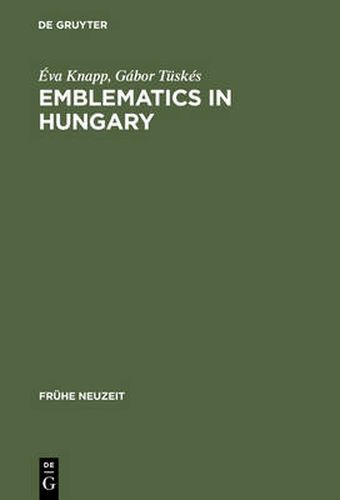Readings Newsletter
Become a Readings Member to make your shopping experience even easier.
Sign in or sign up for free!
You’re not far away from qualifying for FREE standard shipping within Australia
You’ve qualified for FREE standard shipping within Australia
The cart is loading…






This title is printed to order. This book may have been self-published. If so, we cannot guarantee the quality of the content. In the main most books will have gone through the editing process however some may not. We therefore suggest that you be aware of this before ordering this book. If in doubt check either the author or publisher’s details as we are unable to accept any returns unless they are faulty. Please contact us if you have any questions.
The main aim of the work is to present emblematics in Hungary in its European context, and to show the reciprocal influence between that phenomenon and mainstream literature. The description of the theoretical and historical development in Hungary is supplemented by a series of case studies examining the effect of emblematics upon various literary genres. The final chapter analyzes the link between literary emblematics and the visual arts by looking at a specific example. As in most European countries, emblematics in Hungary is part of a complex labyrinth of literary modes of thought and expression. A relative poverty of theoretical writing went hand in hand with a considerable range of emblematic practice. The emblem proved to be a transitional form between the period when signs and motifs were regarded as having specific and fixed meanings and the modern period when we have developed a different and shifting concept of language and meaning. At the same time as emblems began to penetrate the more popular levels of national culture and literature, they also became more specialized. Hungarian emblematics used, for the most part, existing pictorial and textual combinations of pictures and texts. They employed the emblem notably in genres and texts of the genus demonstrativum, which referred to matters which were topical at the time.
$9.00 standard shipping within Australia
FREE standard shipping within Australia for orders over $100.00
Express & International shipping calculated at checkout
This title is printed to order. This book may have been self-published. If so, we cannot guarantee the quality of the content. In the main most books will have gone through the editing process however some may not. We therefore suggest that you be aware of this before ordering this book. If in doubt check either the author or publisher’s details as we are unable to accept any returns unless they are faulty. Please contact us if you have any questions.
The main aim of the work is to present emblematics in Hungary in its European context, and to show the reciprocal influence between that phenomenon and mainstream literature. The description of the theoretical and historical development in Hungary is supplemented by a series of case studies examining the effect of emblematics upon various literary genres. The final chapter analyzes the link between literary emblematics and the visual arts by looking at a specific example. As in most European countries, emblematics in Hungary is part of a complex labyrinth of literary modes of thought and expression. A relative poverty of theoretical writing went hand in hand with a considerable range of emblematic practice. The emblem proved to be a transitional form between the period when signs and motifs were regarded as having specific and fixed meanings and the modern period when we have developed a different and shifting concept of language and meaning. At the same time as emblems began to penetrate the more popular levels of national culture and literature, they also became more specialized. Hungarian emblematics used, for the most part, existing pictorial and textual combinations of pictures and texts. They employed the emblem notably in genres and texts of the genus demonstrativum, which referred to matters which were topical at the time.